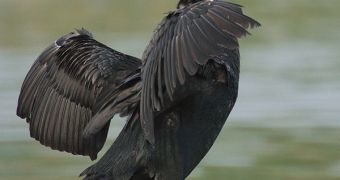The respected scientific journal The American Naturalist recently published a new research, which brought forth a very peculiar trait of the bird world. It would appear, the paper says, that the winged creatures change their usual songs according to the environment they occupy at a certain point, and that the songs may, in fact, vary significantly in intensity, tone and message, depending on the area. The research, led by Louisiana State University (LSU) Behavioral Ecologist Elizabeth Derryberry, focused on white-crowned sparrows, and managed to offer some insight into why this was happening.
Derryberry says that the birds' mating songs modify with their environment, and that the animals do not necessary have to physically move to a different location in order for them to change the tunes they play. Rather, the researcher adds, they change their songs with the landscape. The expert's interest in the matter comes from the fact that she, at some point, came across a number of recordings of sparrow songs from the 1970s, and started listening to them. After hearing modern-day birds singing, she immediately realized that significant variations existed in the tunes the new and old generations were singing.
During the research, Derryberry found out where the old recordings were made, and then took a series of recordings of her own, in the same areas. After that, she compared aerial photos of the landscape, taken in the same region at different points in time. Her main point of interest in the photos was the amount of vegetation that had appeared or disappeared in the regions of interest. The expert then used a computer software to create a slide show of the pictures, from the 1970 onwards, and played the recordings of the songs on top of those images. She immediately noticed that, in areas where the vegetation was thicker, the tunes seemed to drop considerably in tempo.
“It's pretty good evidence that vegetation density can influence birdsong over time,” she said. “Young male sparrows learn to sing by listening to adult males nearby. Juveniles likely learn and repeat the songs they hear most clearly.” Since leaves create echoes, it stand to reason that the adults need to change the tempo, in order to ensure that as few wavelengths in their songs as possible are caught up in reverberation. The younger generation gets accustomed to the slower tunes, and then pass them on themselves.

 14 DAY TRIAL //
14 DAY TRIAL //